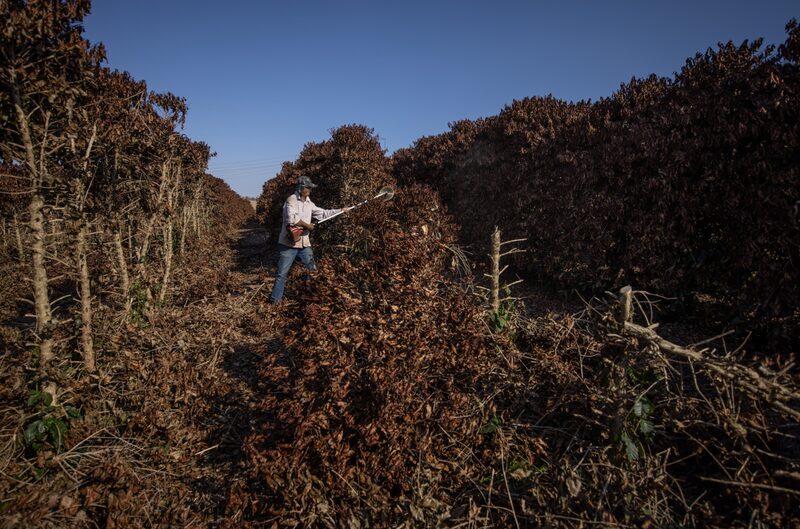Bloomberg — Coffee is getting so expensive that even in the world’s biggest source of the bean drinkers can’t afford it.
Sales in Brazil fell 14% in November from the previous month because of soaring prices, according to industry group Abic. Retail coffee rose 40% last month, triggering an immediate consumer reaction, said Celirio Inacio, the group’s executive-director.
Tumbling coffee consumption is just another sign of consumer stress in Brazil as inflationary pressures suppress demand for all sorts of staples and force shoppers to modify their grocery lists. Coffee prices almost doubled over the past year in New York as inclement weather hurt yields in Brazil and a tight shipping market stunted deliveries all around the world.
“It’s natural to see a consumption decline after a sharp price increase while Brazilians struggle with high inflation rates and lower income,” Inacio said during a telephone interview.
Brazil’s consumer prices rose the most in 18 years last month. Coffee may continue to add to domestic inflation given that prices are expected to jump as much as 30% by March, according to Abic.
In Brazil, prices for arabica -- the highest-quality beans -- surged almost 140% this year, while lower-grade robusta roughly doubled. With the industry reeling from higher production costs, some roasters are switching to robusta in South America and elsewhere.

The gap between robusta and arabica prices widened to the most since 2011 last month, according to Cepea, a research arm of Sao Paulo University. While global logistic hurdles and delivery delays from major robusta supplier Vietnam have buoyed prices, that variety hasn’t seen as extreme a surge as arabica.
In fact, the outlook for the Brazilian robusta crop is optimistic because it’s been spared much of the bad weather that afflicted arabica, which is grown in different regions. The rosier prospects for robusta may further increase the discount at which it trades to arabica, Cepea said in a report this week.
Still, there is a limit to how much switching can occur, Inacio said. The domestic coffee blend is typically 30% robusta and 70% arabica. While the robusta portion has been increasing, the taste profile will noticeably change if the robusta content gets too high, he noted.
Brazilians drink more coffee than anyone in the world outside the U.S., and domestic roasters have never seen consumption wane, according to Abic.
“We expect Brazilians adapt to this new price reality, reducing waste,” Inacio said.

